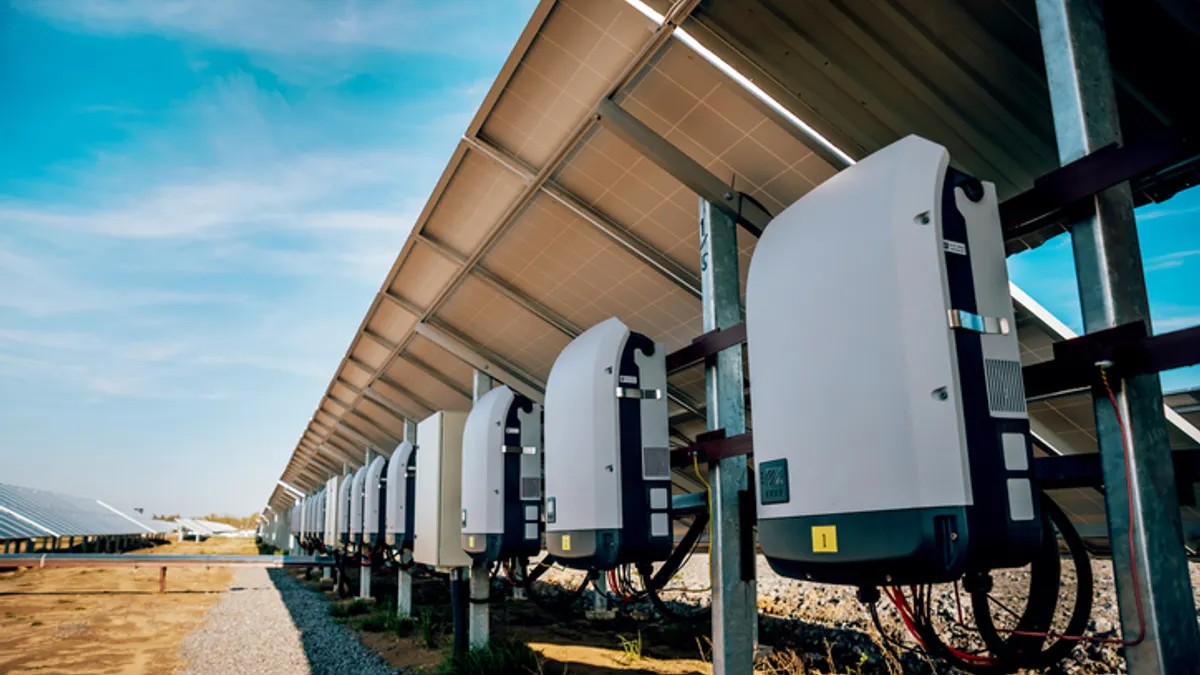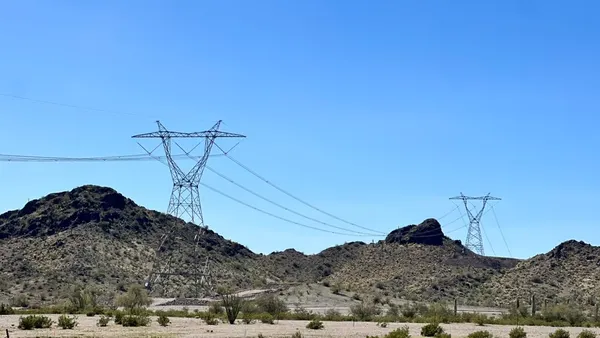Dive Brief:
- Arizona Public Service and AES Energy Storage plan to deploy 2 MW, 8 MWh batteries in a community northeast of Phoenix to defer investment on a 20-mile transmission line.
- The project will provide local generation to residents of Punkin, Arizona, during 20 to 30 peak power demand days per year, offsetting the need for an upgraded line. On other days, it will provide grid services to APS.
- The companies say the project is one of the first in the nation to be proposed solely for its ability to cost-effectively defer a transmission investment, marking an advancement for the use of batteries as alternatives to traditional utility infrastructure.
Dive Insight:
Like most non-wires alternatives, the new APS storage project stems from a grid infrastructure problem.
Modest yet persistent load growth in the town of Punkin was set to overload the sole transmission line serving the community in the middle of the Tonto National Forest about 90 minutes drive from Phoenix.
"We had creeping load growth," Erik Ellis, APS manager of energy technology assessment, told Utility Dive in an interview. "You're talking about a town where, every year, 1% or 2% growth occurs and over time you start to approach the limits of your conductor to carry the current to the residents of that town."
Much of the 21 kV radial feeder crosses "pretty rugged terrain," Ellis said, "so for a lot of reasons — for cost, for sustainability, also just in terms of overall challenge of doing a big project like that — a battery made a ton of sense."
The project will provide local generation to Punkin on 20 to 30 peak demand days a year. "The rest of the time the conductor is fine," Ellis said.
On other days, the batteries will provide other grid services for APS, such as shifting renewable generation to peak hours. "In the spring and the fall the battery will be available to soak up low cost, negatively priced solar on the system at those times and then discharge it when the value of the power is much higher," Ellis said. "All those savings accrue to our customers."
Instead of a multi-year transmission construction project, deploying the batteries is expected to take 12-15 months from planning to operation. And rather than planning a transmission line to accommodate 20 to 30 years of expected load growth, the batteries allow APS to make a shorter-term investment.
"A battery allows you to make a much more incremental step — meet the near-term, five-to-seven year need, and then monitor what's happening in the community," Ellis said. "If it turns out we didn't project enough growth then we can turn around and respond to that."
APS will own and operate project under a 10-year maintenance agreement with AES. The storage company will provide augmentation services over that time to keep the batteries running at nameplate capacity, and the facility is designed to be expanded if higher load growth creates a need.
Pricing details were not released, but Ellis said the facility "saves our customers a fair amount of money."
"When we ran the economics in this Punkin center case it came out pretty clearly in favor of the battery," he said.
The utility says the project represents one of the first "pure" transmission deferment plays for storage in the country. While a number of DER projects list infrastructure deferral as a benefit, the Punkin project's size and specific function make the value proposition for storage as a non-wires alternative clear.
"[NWAs have] been talked about in the industry for a long time and the reality is a lot of those savings everyone talks about are not as big when you get down to the actual numbers," Ellis said. "Here we're talking about millions of dollars in poles and wires that we won't build in lieu of putting down this battery."
APS is already familiar with AES batteries, installing two 2 MWh facilities last year. And there's more where that came from: The utility's 15-year integrated resource plan calls for the addition of 500 MW of energy storage.












